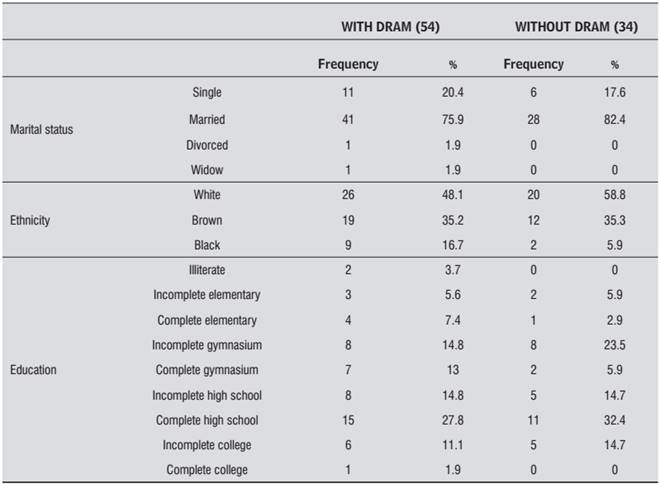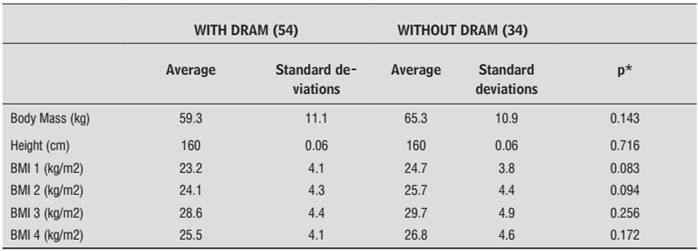Abstract
Introduction:
Diastasis of the rectus abdominis muscle (DRAM) is characterized by the separation of the rectus abdominis muscles beams, caused by enlargement of the linea alba, a common condition during pregnancy. Physical therapy has been shown necessary in women health, to help them adjust the physical changes throughout the pregnancy and puerperium.
Objectives:
To verify the DRAM prevalence in the immediate puerperium in a sample of women attended by the Unified Health System in Guarapuava, PR, Brazil, and investigate possible correlations between the DRAM presence and the delivery type, pregnancies number, maternal age, pregnancy type and weight gain during pregnancy.
Materials and Methods:
This is a transversal study, that included 88 samples of women in the immediately puerperium. It was realized a specific assessment and verified the DRAM presence and its measures. The checkpoints were in the umbilical, 4.5 cm above and below this point. It was considered present and relevant when there was any separation from the linea alba.
Results:
The study showed 61.36% DRAM prevalence. Its averages were 0.88 cm supra-umbilical, 1.23 cm umbilical and 0.3 cm infra-umbilical. Puerperium women who had DRAM, 31.5% were primiparous and 68.5% multiparous.
Conclusion:
The DRAM prevalence was considered high and relevant. The DRAM measure was higher in the umbilical region compared with infra and supra-umbilical. The multiparous women had a higher correlation with the DRAM than the primiparous.
Keywords:
Pregnancy; Diastasis of the rectus abdominis; Puerperium; Prevalence.

 Thumbnail
Thumbnail




